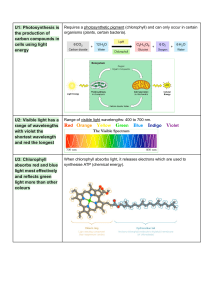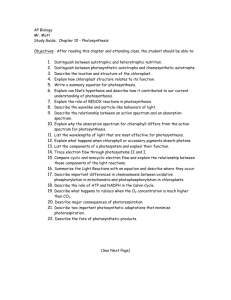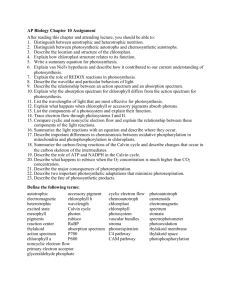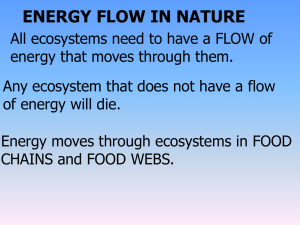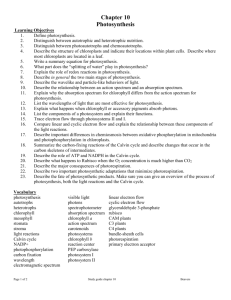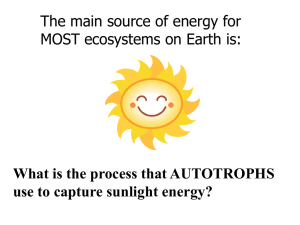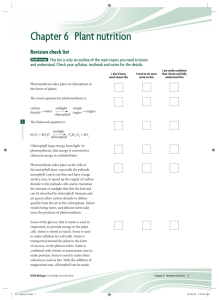BioNinja Revision Notes
advertisement
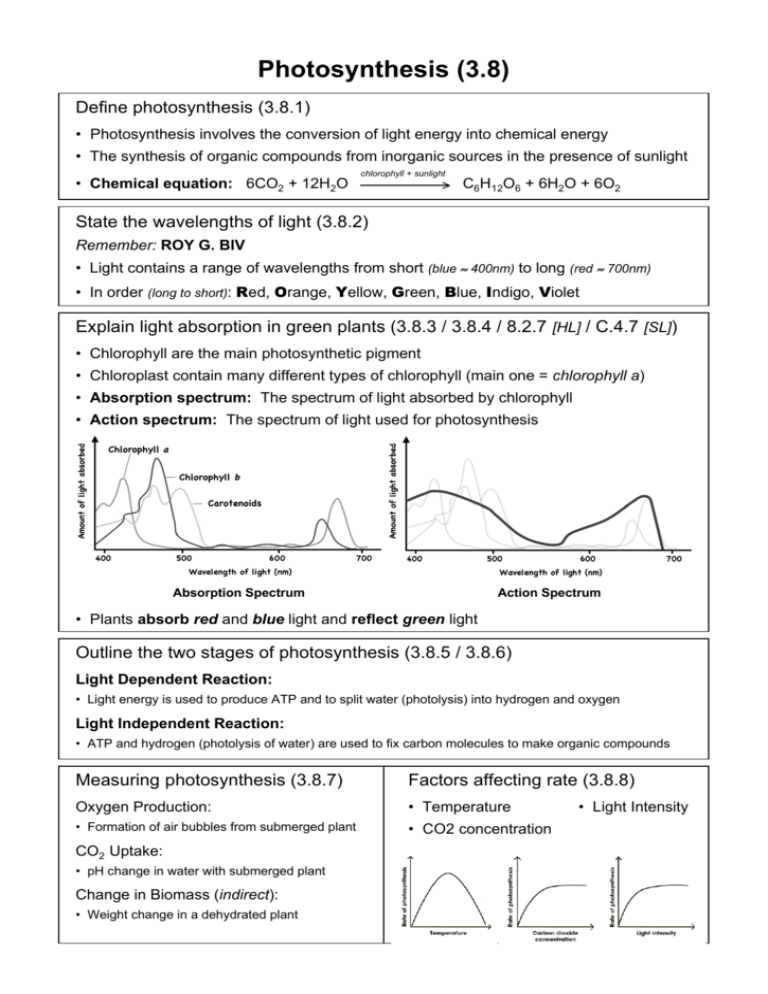
Photosynthesis (3.8) Define photosynthesis (3.8.1) • Photosynthesis involves the conversion of light energy into chemical energy • The synthesis of organic compounds from inorganic sources in the presence of sunlight • Chemical equation: 6CO2 + 12H2O chlorophyll + sunlight C6H12O6 + 6H2O + 6O2 State the wavelengths of light (3.8.2) Remember: ROY G. BIV • Light contains a range of wavelengths from short (blue ≈ 400nm) to long (red ≈ 700nm) • In order (long to short): Red, Orange, Yellow, Green, Blue, Indigo, Violet Explain light absorption in green plants (3.8.3 / 3.8.4 / 8.2.7 [HL] / C.4.7 [SL]) • Chlorophyll are the main photosynthetic pigment • Chloroplast contain many different types of chlorophyll (main one = chlorophyll a) • Absorption spectrum: The spectrum of light absorbed by chlorophyll • Action spectrum: The spectrum of light used for photosynthesis Absorption Spectrum Action Spectrum • Plants absorb red and blue light and reflect green light Outline the two stages of photosynthesis (3.8.5 / 3.8.6) Light Dependent Reaction: • Light energy is used to produce ATP and to split water (photolysis) into hydrogen and oxygen Light Independent Reaction: • ATP and hydrogen (photolysis of water) are used to fix carbon molecules to make organic compounds Measuring photosynthesis (3.8.7) Factors affecting rate (3.8.8) Oxygen Production: • Temperature • Formation of air bubbles from submerged plant • CO2 concentration CO2 Uptake: • pH change in water with submerged plant Change in Biomass (indirect): • Weight change in a dehydrated plant • Light Intensity
